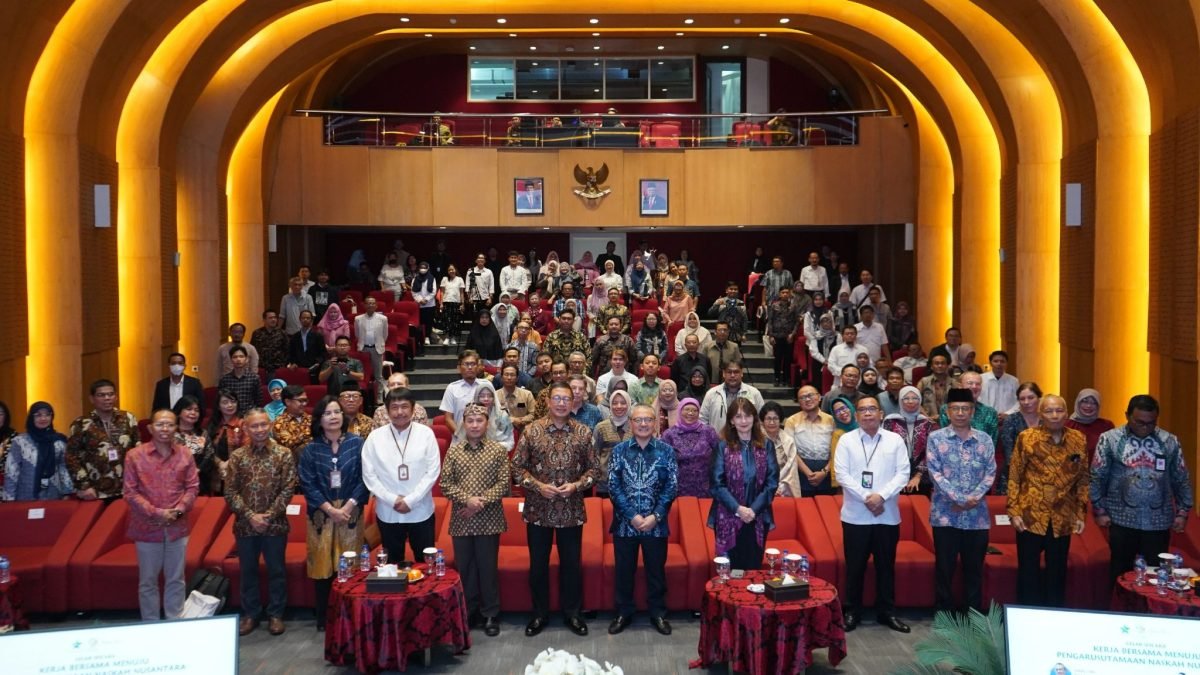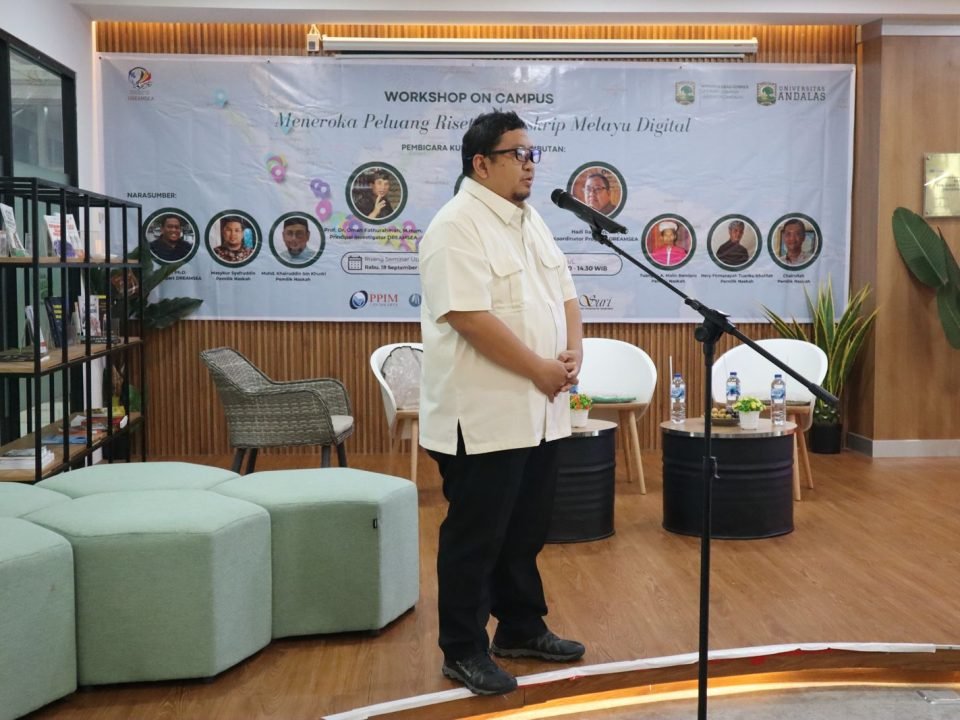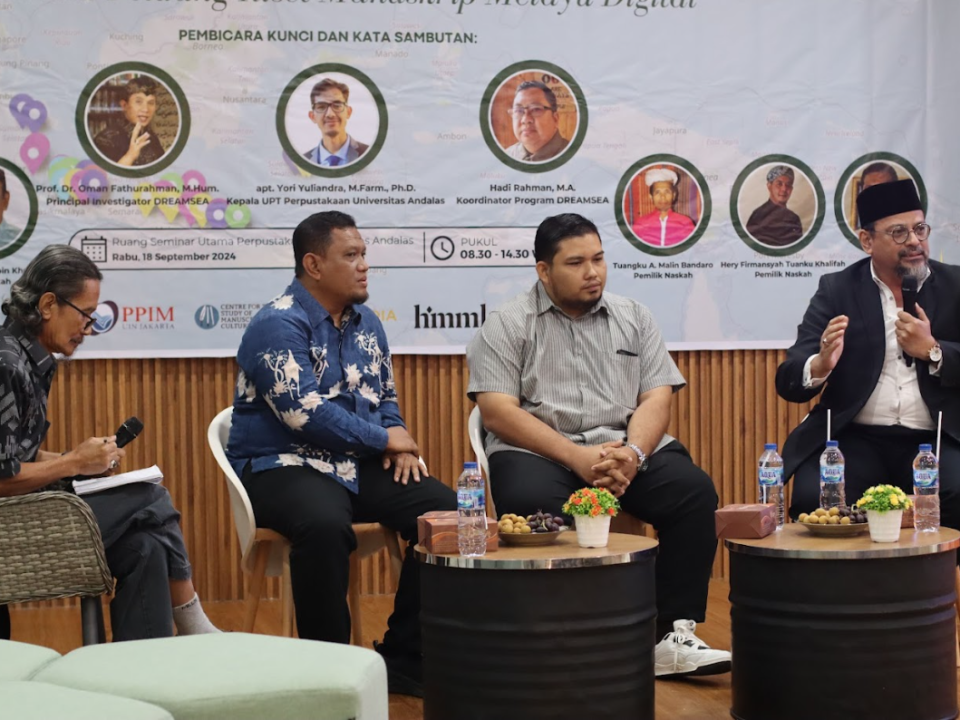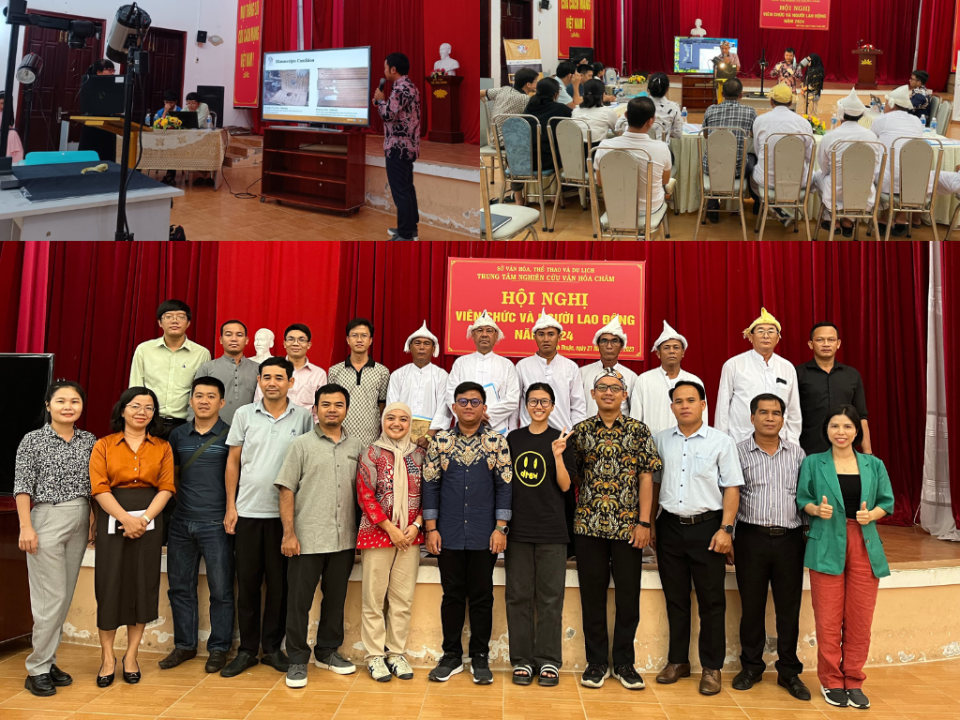Reviving History: DREAMSEA’s Digital Manuscript Grant to Indonesia’s National Library

Jakarta, August 8, 2024 — In a historic move, DREAMSEA (Digital Repository Endangered and Affected Manuscripts in Southeast Asia) has presented a digital grant of ancient manuscripts to the National Library of the Republic of Indonesia (Perpusnas). This preservation program is the result of a collaboration between the Center for the Study of Islam and Society (PPIM) at UIN Syarif Hidayatullah Jakarta and the Centre for the Study of Manuscript Culture (CSMC) at the University of Hamburg, Germany, aimed at saving endangered cultural heritage in Southeast Asia.
The grant presentation event took place at the Perpusnas building, themed “Working Together Towards the Mainstreaming of Nusantara Manuscripts.” This grant includes over 571,584 high-resolution images and 8,470 structured metadata entries, originating from 8,570 manuscripts collected from 168 owners across 57 regions. The digitization process, which took eight years from 2018 to 2024, reflects the dedication of the DREAMSEA team in preserving this extraordinary cultural wealth.
Weaving Back History Lukman Hakim Saifuddin, Chairman of the Ngariksa Budaya Indonesia Foundation, emphasized the importance of manuscript preservation as a collective effort to connect the past with the present. “Preserving manuscripts is a joint endeavor to ensure that future generations do not lose their historical roots,” he stated. Amid social and political challenges, these manuscripts are expected to revive the values and wisdom of ancestors.
E. Aminudin Aziz, Acting Head of Perpusnas, welcomed this grant as part of the government’s commitment to enhancing literacy and mainstreaming Nusantara manuscripts. “This grant is a significant mandate that must be upheld by the government,” he explained. The digital collection will be managed through the Khastara application, aiming to facilitate public access to this valuable cultural heritage.
Collaboration for the Future From DREAMSEA’s perspective, Principal Investigator Oman Fathurahman revealed that this program is more than just saving manuscripts. “We believe that cultural preservation cannot be done alone. Collaboration between the government, academics, and the community is crucial,” he stressed. He hopes that the digitized manuscripts will be accessible to all, enriching knowledge and appreciation for cultural heritage that represents the nation’s identity.
With this bold step, it is hoped that the ancient manuscripts saved will connect the past, present, and future. Manuscript preservation is a shared responsibility, reflecting the invaluable cultural identity of our ancestors. Over time, this heritage will continue to thrive, inspiring future generations to recognize and appreciate their historical roots.




